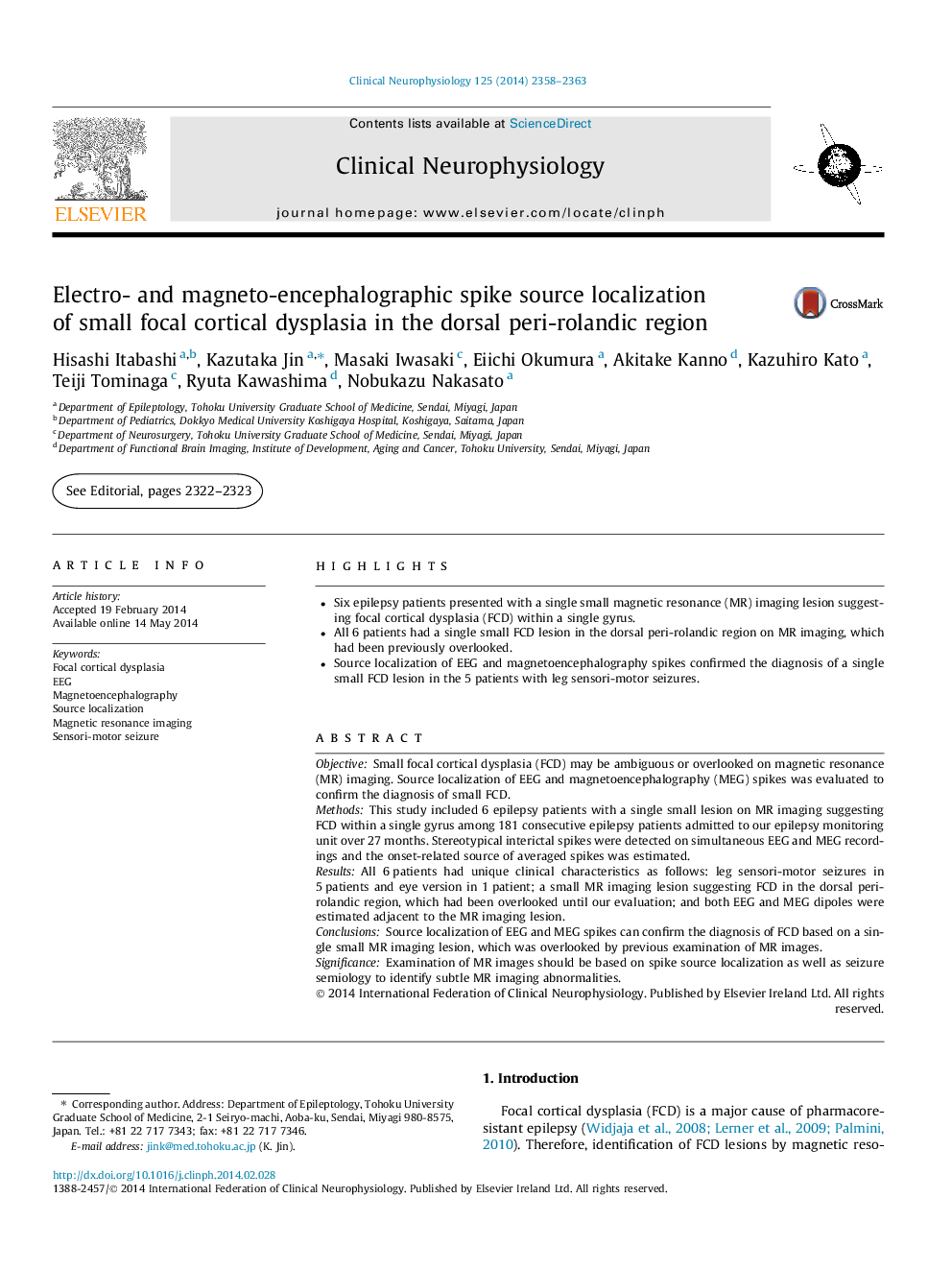| Article ID | Journal | Published Year | Pages | File Type |
|---|---|---|---|---|
| 3043451 | Clinical Neurophysiology | 2014 | 6 Pages |
•Six epilepsy patients presented with a single small magnetic resonance (MR) imaging lesion suggesting focal cortical dysplasia (FCD) within a single gyrus.•All 6 patients had a single small FCD lesion in the dorsal peri-rolandic region on MR imaging, which had been previously overlooked.•Source localization of EEG and magnetoencephalography spikes confirmed the diagnosis of a single small FCD lesion in the 5 patients with leg sensori-motor seizures.
ObjectiveSmall focal cortical dysplasia (FCD) may be ambiguous or overlooked on magnetic resonance (MR) imaging. Source localization of EEG and magnetoencephalography (MEG) spikes was evaluated to confirm the diagnosis of small FCD.MethodsThis study included 6 epilepsy patients with a single small lesion on MR imaging suggesting FCD within a single gyrus among 181 consecutive epilepsy patients admitted to our epilepsy monitoring unit over 27 months. Stereotypical interictal spikes were detected on simultaneous EEG and MEG recordings and the onset-related source of averaged spikes was estimated.ResultsAll 6 patients had unique clinical characteristics as follows: leg sensori-motor seizures in 5 patients and eye version in 1 patient; a small MR imaging lesion suggesting FCD in the dorsal peri-rolandic region, which had been overlooked until our evaluation; and both EEG and MEG dipoles were estimated adjacent to the MR imaging lesion.ConclusionsSource localization of EEG and MEG spikes can confirm the diagnosis of FCD based on a single small MR imaging lesion, which was overlooked by previous examination of MR images.SignificanceExamination of MR images should be based on spike source localization as well as seizure semiology to identify subtle MR imaging abnormalities.
